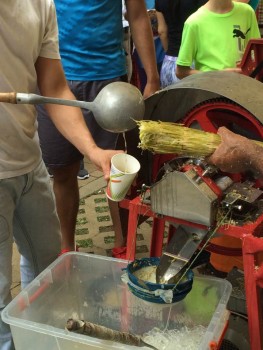Learning - and teaching - to see
“What’s going on here?”
That was posed as a central question in a course called Frame Analysis that I took from my mentor and spirit guide Robert Hopper around 1980. The idea was that we humans all need to have some idea of an answer to that to move from one situation to the next. The framing we learned about in that course was the kind that happens in conversation: how we know someone is joking, flirting, getting angry, taking charge, and so forth. I’ve studied and taught around the edges of those issues ever since.
Soon I’ll teach a course where I’ll take up a new approach to that question, one that centers on visual images. I’ll lead undergraduate Spanish majors through photographs taken in Medellin, Colombia, on a journey that I hope teaches them, first, aspects of Colombian life and culture they couldn’t learn from reading (which they’ll already be doing plenty of). Second, I hope they will learn how to see more acutely, more critically, more educatedly, than they currently do.
To teach them any of this I have to learn at least some of it myself, and that’s one of the places I’m putting my efforts these days in Medellin. I watched this process at a weekly farmer’s market for a good half hour today: A muscled young man split sugar cane precisely down the middle with a wicked-looking machete and laid them in two-foot lengths on a table in the shade of an awning. A woman lined up limes cut in half down one side of the sugar cane and laid the other one on top, cut sides facing each other. An older man with a mustache picked up the sugar cane with the limes, holding them carefully together, and fed them into a motorized grinder that squeezed the juice and pulp through a strainer into a large bucket of ice underneath. He tossed the limes after one use, but the sugar cane went through at least twice before it was thrown away. I moved to the front side of the grinder where there was a little bit of spray, and just the smell of the limes and sugar cane on a warm day was enough to make me feel refreshed and light-headed. A line was forming down the side of the tables where the three were working; people were quiet, watching the sugar cane, the limes, the spray, the pale green liquid getting higher in the bucket of ice. There were stacks of plastic cups on one table, and people in line grabbed the size they wanted as they approached: small, large, and Big Gulp. I got a small one; it cost about 75 cents. It tasted like a cold spring rain underneath a lime grove, after 10 days’ hike in the desert.
So I wanted one photograph, maybe two, to get all of this across to the students. One photo that I could put on the screen in class and say: What’s going on here? And gently force them to stay there on this one screen longer than they do when they flip through Instagram or Facebook, when they know what’s happening in a nanosecond so why linger? The learning here is to stop and stare, and to get as far as they can with me telling them as little as possible: What is this machine in the back? What is the dipper pouring into the cup? What are the hands holding? Who are the people in the picture and what are each of them doing?
In the end, this is not about how good can I get at photography – although I do need one photo to carry a lot with it. It’s about how to learn another way of life through observing, quietly and carefully, the details.
Commenting is not available in this channel entry.


Comments
Rich on Wednesday, July 19, 2017
Is frame alignment the same as saying that the participants have the same perspective?